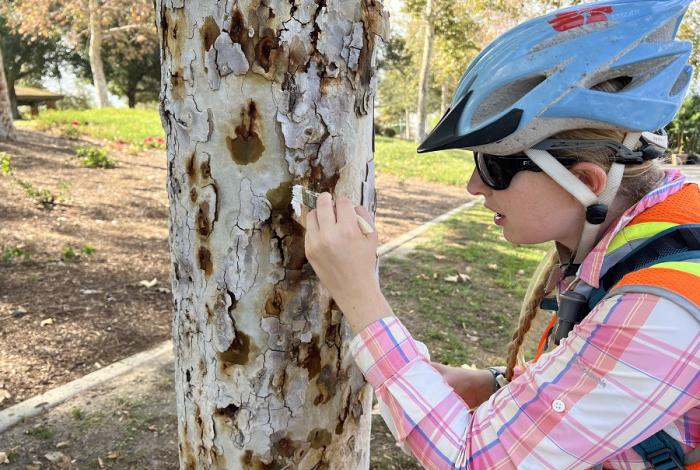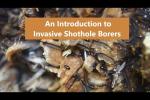Your HOA at Work
- Homepage
- About
- larmac
- Your HOA at Work
- Landscape
- Pest Management
LARMAC Collaborates with University to Save Trees throughout Ladera Ranch.
Ladera Ranch has an invasive pest, the Invasive Shothole Borer Beetle (ISHB) that is threatening the health of trees throughout the community. Since the ISHB beetle is not native to Southern California, it does not have a natural predator. This makes it extremely concerning since the beetle can reproduce quickly and given the extensive damage it can do to the local ecosystem in a relatively short time.
The invasive beetle bores into a tree and creates a series of galleries to lay its eggs in and in-turn grows Fusarium fungus, which the larvae feed on. This causes a disruption in water transport within the tree, which results in limbs becoming brittle and eventually death. As the tree limbs die and cause the tree to become dried out, they contribute to the wildfire hazard. Trees that are susceptible to this pest are the Sycamore, Cottonwood, Willow, Valley Oak, Engelmann Oak, White Alder, and Box Elder species.
Ladera Ranch Maintenance Corporation (LARMAC) is working diligently with OCFA, University of California Cooperative Extension (UCCE), and leading experts in invasive tree pests, to address the infested trees in Ladera Ranch. Additionally, it is taking advantage of available grant funding in its effort to mitigate ISHB and save as many trees as possible in the community.
Through the California Department of Forestry and Fire Protection (CAL FIRE), the Orange County Fire Authority (OCFA) was awarded $5.4 million dollars to fund its ORC Invasive Tree Pest Mitigation and Fuels Reduction grant project to address the escalating problem of invasive tree pests in Orange County, reduce fuel loads from dead/dying trees, and reduce greenhouse gas emissions from increased wildfire activity and tree loss as a result of invasive pests.*
OCFA has contracted with UCCE to conduct tree surveys and provide treatment recommendations to save low to moderately infested trees and remove severely-infested trees. UCCE researchers are actively looking for ways to control the beetle and the resulting fungal disease that often leads to tree death. The expenses related to surveys, treatment, and removal are being covered by the CAL FIRE Wildfire Prevention grant awarded to OCFA.*
To date, UCCE has surveyed over 1,800 trees at Cox Sports Park and along the Sienna Botanica. The recommendation is for the removal of 64 dead trees, some of which have already been removed, and 172 severely infested trees, also known as amplifier trees; the treatment of 371 moderately infected; and management of 1,068 trees with low levels of infestation. Treatments will vary and will be part of a UCCE research trial. LARMAC is in the process of reviewing the 172 trees identified as amplifier trees to verify that the trees should be removed instead of receiving aggressive treatment. The hope is that the trees with low levels of infestation will overcome the infestation with treatment and removal of the sources of infestation (amplifier trees).
For updates on this project, visit LaderaLife.com (see ‘Your HOA at Work’).
*The ORC Invasive Tree Pest Mitigation and Fuels Reduction grant project is part of California Climate Investments, a statewide program that puts billions of cap-and-trade dollars to work reducing greenhouse gas emissions, strengthening the economy, and improving public health and the environment – particularly in disadvantaged communities. It encompasses all Orange County State Responsibility Area (SRA) lands plus the SRA-Threat buffer zone.



